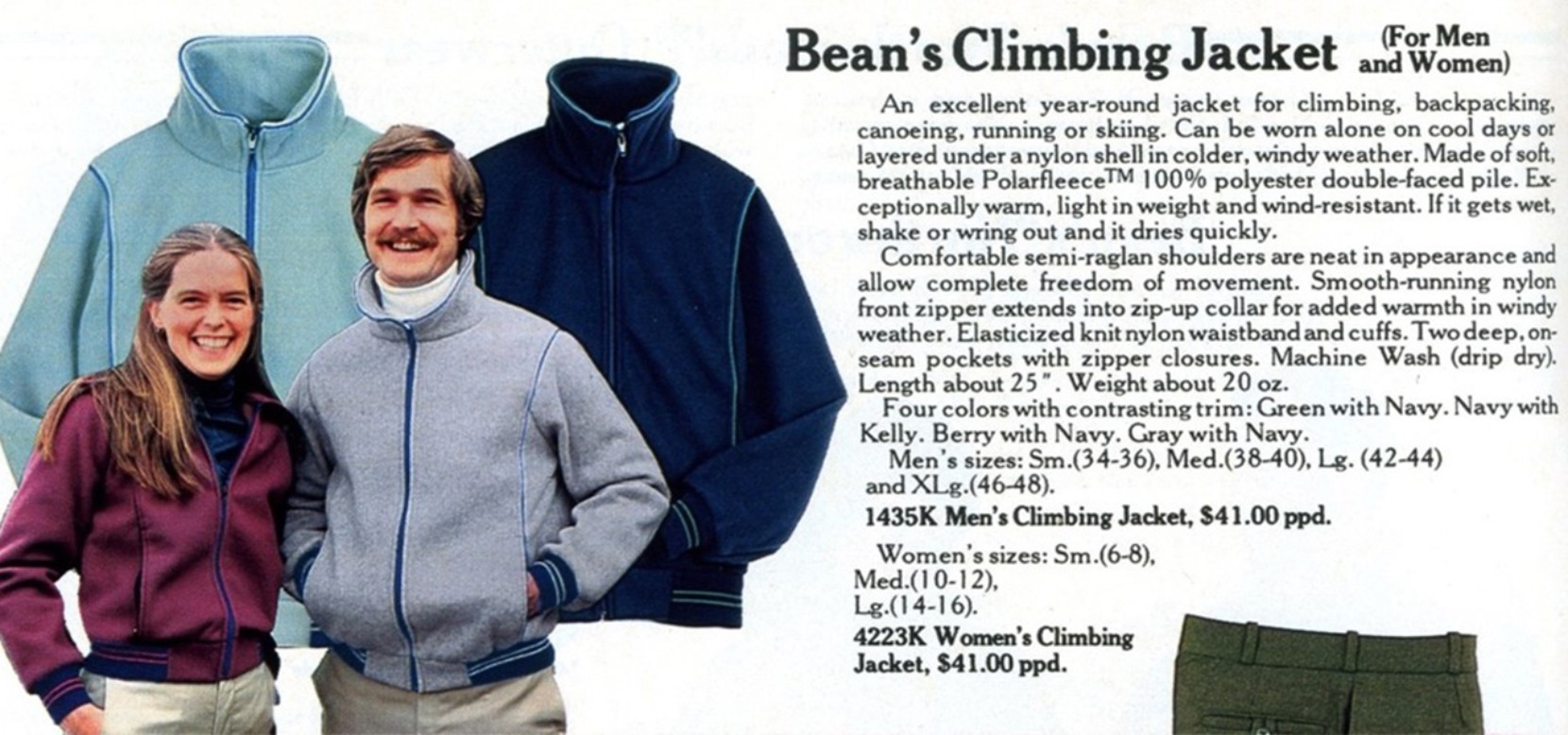For the better part of history, keeping warm in the outdoors came with a catch: Fabrics that held in heat also held in water. Soggy, heavy coats could inhibit even the most intrepid explorer. Then, in 1981, Malden Mills manufactured a fabric that would become an essential for the outdoors and the everyday: fleece.
Created by “napping” pile — cutting the loops and teasing the fabric upward — the synthetic material, initially coined as Polarfleece, would offer several advantages over its outerwear predecessors. The breathable fabric was warm like wool or shearling, but lighter, more durable and easily cleaned or dried, making it ideal for high-performance activities.
The versatile fleece — sometimes called faux shearling or sherpa — was soon everywhere, and L.L.Bean is credited as one of the early adopters and main contributors to the widespread popularity of the new product. Perhaps due to the extraordinary softness of the material, one of the L.L.Bean’s first fleece products was a baby blanket. And as early as the 1983 L.L.Bean Holiday Catalog, the “Bean Climbing Jacket” was introduced for men and women and marketed for climbing, backpacking, canoeing, running or skiing. The early design echoed a letterman jacket and featured a zip-up collar for added warmth, which would become an identifiable feature of fleece outerwear.
In the years that followed, L.L.Bean broadened its portfolio of products that utilized fleece. The Polarfleece Hunting Jacket and Hunting Pants, Polarfleece Plaid Climbing Jacket, Polarfleece Bag Liner and Sleeping Bag became outdoor gamechangers, offering adventurers a lighter, more functional option. L.L.Bean even sought to warm from the inside-out, lining boots, slippers and gloves with fleece.
When the original manufacturer of fleece, Malden Mills, changed its name to Polartec in 1991, the company also expanded its offerings. L.L.Bean seized on every innovation, offering the latest in fleece technology to popularize its fleece favorites amidst a wave of popularity.
By the late ‘90s, fleece was everywhere. In fact, a 1998 New York Times article referencing the Bean Holiday Catalog notes, “Fleece was the unrivaled star attraction, featured on the front and back covers and highlighted in the first 14 pages; more than 170 fleece items were available.”
Though the popularity of fleece fluctuated in the 2000s, a fleece renaissance has inspired a new generation to fall in love with the multifaceted favorite. As one of the seminal sellers of fleece, L.L.Bean is now offering new and improved ways to enjoy the old classic.
While much of L.L.Bean’s apparel is inspired by heritage designs, today the company’s fleece assortment offers high-tech, sustainable and comfortable upgrades. The L.L.Bean Mountain Classic Fleece , for instance, takes inspiration from the heritage fleece, but the 100% recycled jacket offers such warmth it has become L.L.Bean’s best-selling fleece. Over the years, Bean has adapted its fleece assortment to consumers’ changing wants and needs, designed to be softer, more durable and varied in style, weight and size.
This spring, the outdoor company will introduce a limited selection of deadstock fleece made from surplus materials, creating new products from recycled materials. The Archive Re-Issue is inspired by the 1992 pullover design and colorways, using sustainable materials sourced in part from L.L.Bean fleece products. The exclusive and limited-quantity designs will be on sale beginning April 22nd on L.L.Bean’s Instagram account, offering fans the rare opportunity to own an icon.




